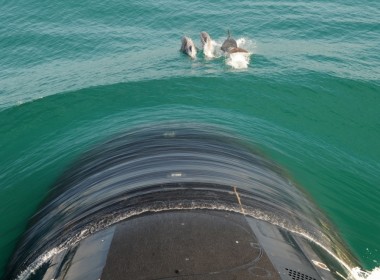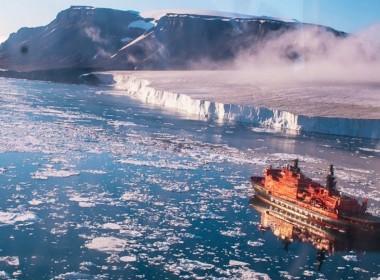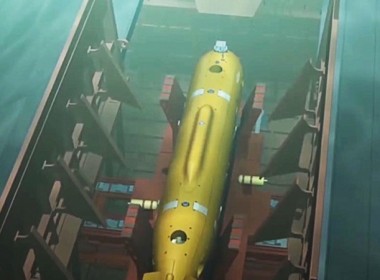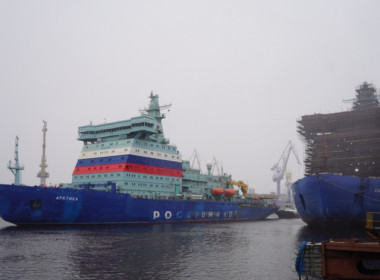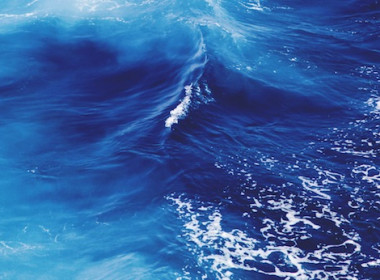OPINION | Australia’s nuclear-powered submarines should be built in America

The first of anything is expensive. Theodore Wright studied this in the 1930s and found a mathematical relationship between how many of a thing have been made and how much cheaper and faster production becomes. Wright’s Law states that for every doubling of production, the cost drops by a certain percentage determined in large part by how complex the production line is.
It’s hard to imagine a more complex production line than that for nuclear submarines. Look at Britain’s difficulties as it builds seven boats in its Astute-class nuclear-powered attack submarine (SSN) program.
Wright’s Law suggests that by the eighth and final nuclear submarine made in Australia—provided everything goes well—our production will be about half as efficient as the Americans who have already produced 19 out of a planned 66 Virginia-class nuclear submarines.
“Having Australian SSNs built in the US would depend on America’s willingness to increase its own production capacity.”
America’s shipyards currently produce 2.6 Virginia-class submarines each year, and some in Washington are lobbying for that to be increased. These American-designed and -built boats, bought in batches, are finished on time and on budget—two concepts that Wright’s Law doesn’t assume for the first dozen of anything so complex.
After a 17,500-man-year design investment, the sail-away cost of an American-made Virginia-class submarine currently stands at US$4.8 billion. Generally, the total program cost (including things like support facilities in Australia) is 1.5 to two times the sail-away cost. This puts the total program cost per American-built submarine between US$6.7 billion and US$9.6 billion. Having them made in Australia will add billions to this figure, with a current upper estimate of US$14 billion per boat. Going by Australia’s recent experience with the Attack-class, and observing Wright’s Law, the final figure could be well beyond this.
Then there’s timing. In the US, a recent batch of nine Virginia-class subs was scheduled to take 10 years to produce. In a period when timing is critical to our national security, setting up production lines in Australia will add years, most likely over a decade, to the program. This isn’t due to any inherent weakness in Australian manufacturing; it’s largely due to the inefficiencies suffered in making the first batch of anything so complex.
Yet having Australian SSNs built in the US would depend on America’s willingness to increase its own production capacity. The US Congress has listed “the contributions that SSNs make to fulfilling [defense and national security] strategies,” and funding, as two factors influencing its decision to increase production. In terms of the US building our submarines, the AUKUS pact satisfies the first requirement, and Australia providing the funding answers the second. This means America would be able to scale up production to suit Australia’s demand.
Well over AU$35 billion (US$26 billion) and several years will be saved by making Australia’s submarines in the US.
“The move will also dramatically improve Australia’s defence capabilities, aid the AUKUS alliance, and foster a domestic supply chain for the next generation of defence equipment.”
And if the Americans build the submarines, Australia can leapfrog a generation of technology while refining the engineering skills required to design and manufacture autonomous underwater vehicles. Submarine design is far simpler when humans don’t need to live inside them. Breathable air, water, food, waste, medical, living spaces and some elements of protection from attack are all off the table with AUVs.
Fewer personnel are needed to operate AUVs. With the money saved by building the submarines in the US, Australia can invest a further AU$20 billion (US$14.8 billion) in developing an AUKUS industrial hub for AUVs in South Australia, using the formidable engineering skills already available there. Autonomous submarine technology will spur more innovation in Australia than building the non-nuclear parts of eight nuclear-powered boats. Australia will be able to export these autonomous submarines to its AUKUS partners.
The AUKUS announcement was a watershed for Australia. Nuclear submarines are clearly more effective than conventional submarines, yet we must choose carefully where to focus our efforts. The next generation of US nuclear submarine, the SSN(X), may be the last to require human crews. While there is understandable pressure to partly manufacture the nuclear submarines in Australia, it would be a bad decision.
Theodore Wright’s analysis provides us with a clear way forward. Building the submarines in the US won’t just save a prodigious sum of money and take precious years off the schedule. It will also dramatically improve Australia’s defence capabilities, aid the AUKUS alliance, and foster a domestic supply chain for the next generation of defence equipment.


